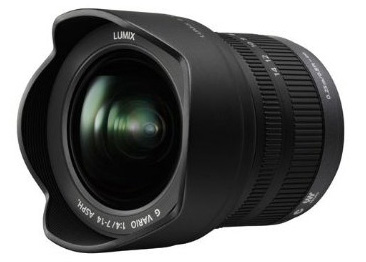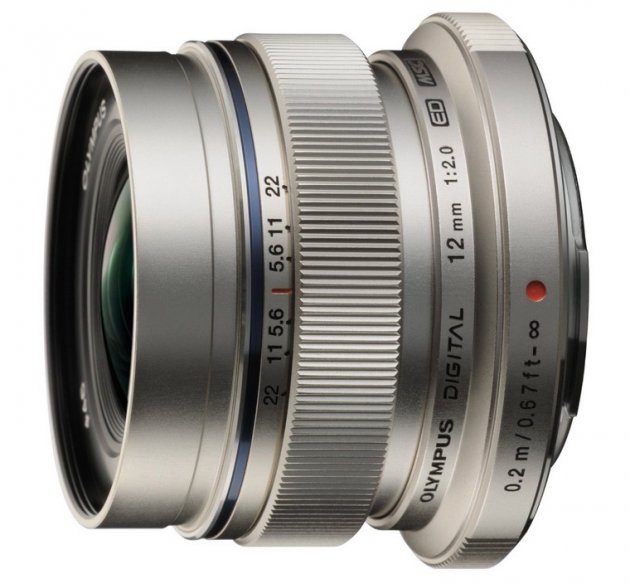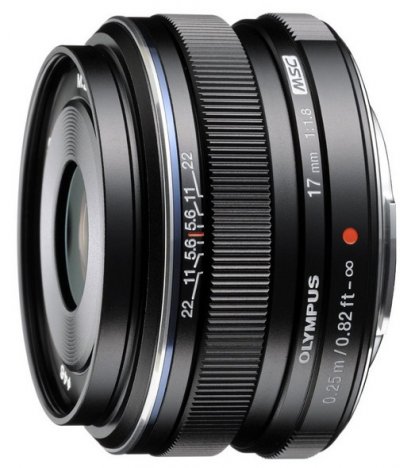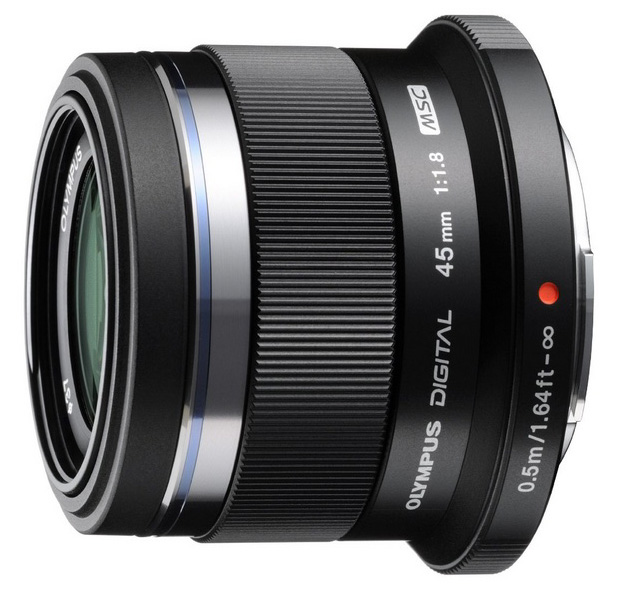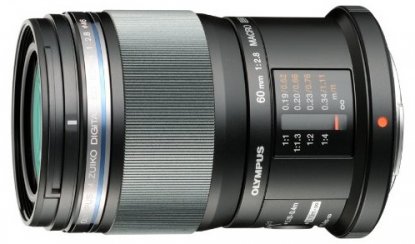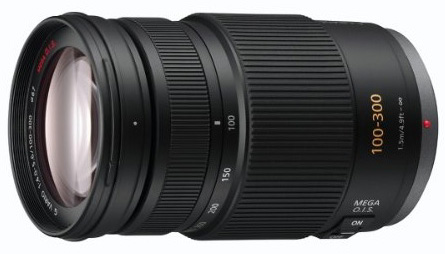Micro Four Thirds camera systems are some of the hottest of the market, with a number of powerhouse camera and lens options from Olympus and Panasonic. Lenses for Micro Four Thirds are interchangeable between brands without adapters, creating an extensive collection to choose from regardless of your camera brand. Below are our picks for the best Micro Four Thirds lenses for 2013-2014, from wide-angle to portrait and telephoto zoom.
Wide-Angle Lenses for Micro Four Thirds
Panasonic Lumix 7-14mm f/4.0 ($968)
For enthusiasts and professional photographers, the Panasonic Lumix 7-14mm is the top ultra-wide-angle zoom lens for Micro Four Thirds. The lens is more expensive and heavier than the Olympus 9-18mm below, but discerning photographers will appreciate the sharpness, build quality, and outstanding images produced by the Lumix 7-14mm. We also like the integrated hood feature.
Weight: 10.6 oz.
Max Aperture: f/4.0
35mm Equivalent: 14-28mm
Pros: Ultra-wide angle capability
Cons: Cost
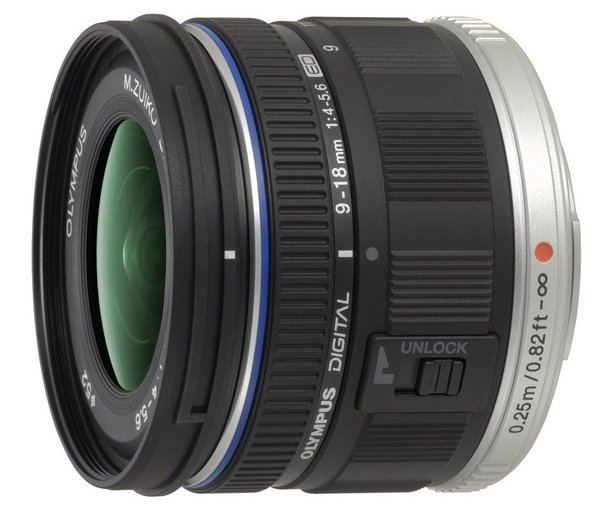 Olympus 9-18mm f/4.0-5.6 ($699)
Olympus 9-18mm f/4.0-5.6 ($699)
A cheaper wide-angle zoom lens is the Olympus 9-18mm (wide-angle zooms are an expensive bunch). The Panasonic 7-14mm above is slightly faster and sharper, but its price tag exceeds the cost of most wide-angle zoom lenses for DSLRs. The Olympus 9-18mm also is lighter at only 5.6 ounces and produces images that should satisfy the majority of photographers.
Weight: 5.6 oz.
Max Aperture: f/4.0
35mm Equivalent: 18-36mm
Pros: Lightweight
Cons: Distortion at the wide end, low light performance![]()
For those who frequently shoot in low light, the Olympus 12mm f/2.0 is the top wide-angle prime lens for Micro Four Thirds. With an equivalent focal length of 24mm on a 35mm camera, the lens is sharp, fast, and features sturdy all-metal construction. At only 4.6 ounces, a lens of this caliber and size is one of the reasons to own a Micro Four Thirds camera.
Weight: 4.6 oz.
Max Aperture: f/2.0
35mm Equivalent: 24mm
Pros: Exceptional optics, weight
Cons: Cost, not as wide as the zoom lenses above
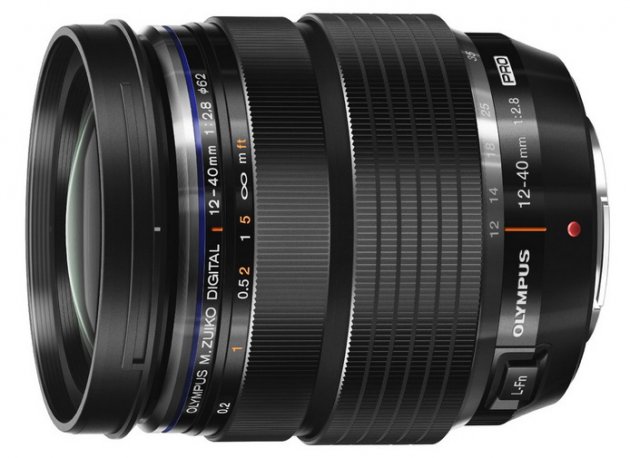 Olympus 12-40mm f/2.8 Pro ($999)
Olympus 12-40mm f/2.8 Pro ($999)
Set to be released on December 7, 2013, the new Olympus 12-40mm f/2.8 Pro was built for enthusiasts. It’s an impressive lens featuring a maximum aperture of f/2.8 throughout its zoom range, metal construction, weather sealing, and a nifty manual focus ring. With a focal length equivalent of 24-80mm on a 35mm camera, this is an ideal travel and portrait lens. Another wide-angle option, albeit even more pricey, is the Panasonic Lumix 12-35mm f/2.8.
Weight: 13.5 oz.
Max Aperture: f/2.8
35mm Equivalent: 24-80mm
Pros: Impressive low light performance for a zoom lens
Cons: Cost
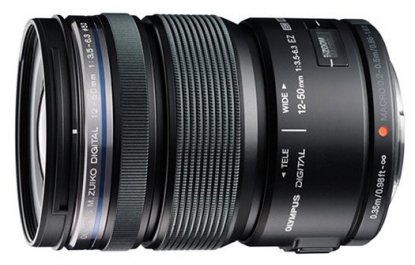 Olympus 12-50mm f/3.5-6.3 ($399)
Olympus 12-50mm f/3.5-6.3 ($399)
The Olympus 12-50mm is a versatile everyday lens that covers the majority of the most used focal lengths (you will need a telephoto zoom for a complete set-up). One weakness of this lens is its aperture range of f/3.5-6.3—those who frequently shoot in low light may prefer the new Olympus 12-40mm f/2.8 Pro above or a faster prime lenses. Otherwise, this is a versatile budget option.
Weight: 7.5 oz.
Max Aperture: f/3.5
35mm Equivalent: 24-100mm
Pros: Versatility
Cons: Low light performance
Everyday and Portrait Lenses for Micro Four Thirds
For travel and street photography, the Olympus 17mm f/1.8 is a terrific all-around lens with a focal length equivalent of 34mm on a 35mm camera. The lens is sharp, has fast autofocus, great bokeh, and a quality metal build, despite weighing only 4.3 ounces. For a cheaper 17mm option, try the Olympus 17mm f/2.8.
Weight: 4.3 oz.
Max Aperture: f/1.8
35mm Equivalent: 34mm
Pros: Low light performance and autofocus
Cons: Cost
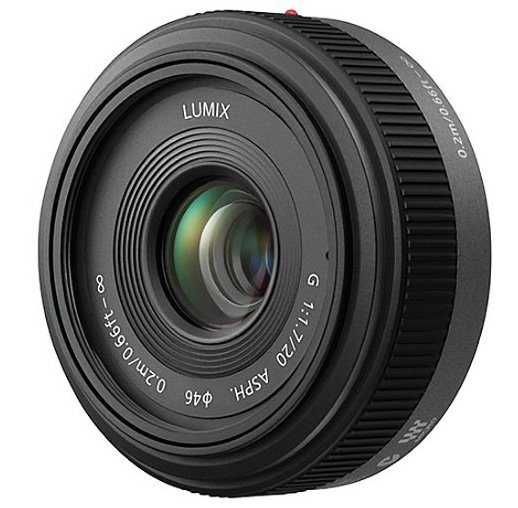 Panasonic Lumix 20mm f/1.7 II ($425)
Panasonic Lumix 20mm f/1.7 II ($425)
The Panasonic Lumix 20mm f/1.7 II is one of the most popular Mirco Four Thirds lenses on the market (the original version had banding issues with high ISO images and thus was replaced). This pancake-style lens is extremely light at only 3.5 ounces, and despite its compact size, boasts exceptional optics, sharpness, and bokeh. All things considered, you won't find a better value in a Micro Four Thirds lens.
Weight: 3.5 oz.
Max Aperture: f/1.7
35mm Equivalent: 40mm
Pros: Sharpness, low light performance
Cons: Old version had banding at high ISOs
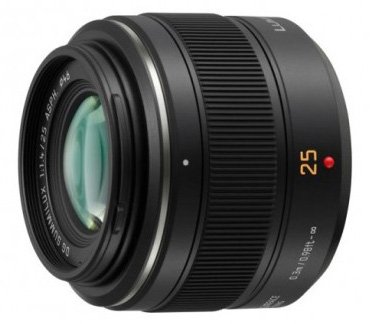 Panasonic Leica Summilux 25mm f/1.4 ($529)
Panasonic Leica Summilux 25mm f/1.4 ($529)
Leica makes some of the best lenses on the planet—the Panasonic Leica Summilux 25mm is the premier portrait lens for Micro Four Thirds. With a focal length equivalent of 50mm on a 35mm camera, the lens produces outstanding photos and videos, offers the best low light performance on this list, has fast and accurate autofocus, and excellent sharpness (even wide open).
Weight: 7.1 oz.
Max Aperture: f/1.4
35mm Equivalent: 50mm
Pros: Sharpness and low light performance
Cons: None
Macro and Close-Up Portrait Lenses for Micro Four Thirds
One of the best values on the Micro Four Thirds market is the Olympus M. Zuiko 45mm. With a wide maximum aperture of f/1.8, the lens is able to capture photos with excellent bokeh, texture, and color rendition. It also focuses quickly and is exceptionally lightweight at only 4.1 oz. The Olympus 45mm does not have image stabilization like the more expensive Panasonic 45mm f/2.8, but is less than half the price and better in low light.
Weight: 4.1 oz.
Max Aperture: f/1.8
35mm Equivalent: 90mm
Pros: Lightweight and a great value
Cons: None![]()
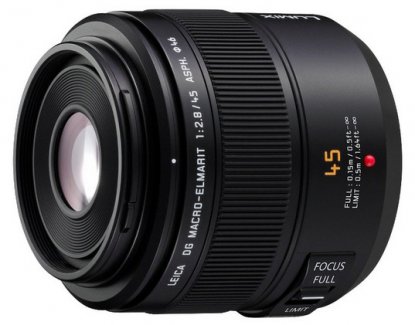 Panasonic Leica 45mm f/2.8 ($719)
Panasonic Leica 45mm f/2.8 ($719)
For macro photography and close-up portraits that require image stabilization, the Panasonic Leica 45mm f/2.8 captures exceptional images. The lens is extremely sharp, produces excellent bokeh, and vibrant colors. As with almost all Leica lenses, premium quality comes with a premium price tag, which is the biggest hurdle for most consumers in choosing this lens.
Weight: 7.9 oz.
Max Aperture: f/2.8
35mm Equivalent: 90mm
Pros: Superb optical performance
Cons: Cost
The Olympus 60mm f/2.8 offers similar optical quality to the Panasonic Leica 45mm above. One shortcoming is its focal length of 60mm—equivalent to 120mm on a 35mm camera—which is longer than some photographers prefer for macro. Others are the lack of image stabilization and mostly plastic construction (the lens does have a metal mount). But all things considered, the Olympus 60mm is a good macro lens and is weather sealed (the Panasonic 45mm macro lens is not).
Weight: 6.5 oz.
Max Aperture: f/2.8
35mm Equivalent: 120mm
Pros: Cost, weight
Cons: No image stabilization
Telephoto Zoom Lenses for Micro Four Thirds
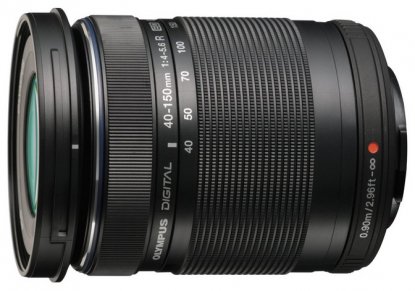 Olympus 40-150mm f/4.0-5.6 ($181)
Olympus 40-150mm f/4.0-5.6 ($181)
A nice budget telephoto zoom for Micro Four Thirds is the Olympus 40-150mm. With a lower price tag comes a plastic build and mount, but overall the lens is sharp, has fast and accurate autofocus, and captures good images (particularly in normal light). It’s also lightweight for a lens of its type at only 6.7 ounces.
Weight: 6.7 oz.
Max Aperture: f/4.0
Pros: Weight, cost
Cons: Durability, low light performance![]()
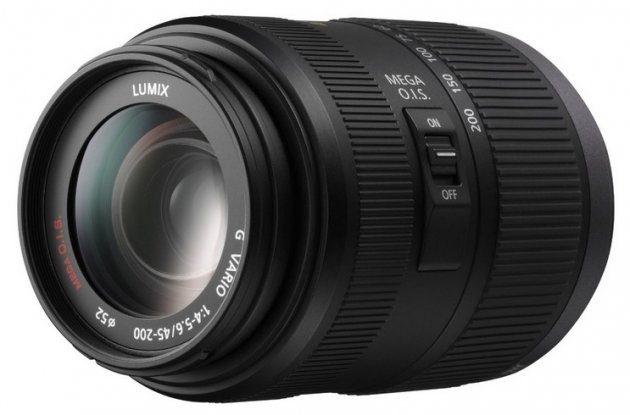 Panasonic Lumix 45-175mm f/4.0-5.6 ($378)
Panasonic Lumix 45-175mm f/4.0-5.6 ($378)
With a focal length equivalent of 90-350mm on a 35mm camera, the Panasonic 45-175mm lens has a longer range than most telephoto zooms for DSLRs. This lens offers a lot of bang for your buck—the autofocus is fast compared to similar lenses, distortion and light falloff are within reason, and the lens is sharp, especially at the heart of the zoom range. It’s also features optical image stabilization and weighs only 7.4 ounces.
Weight: 7.4 oz.
Max Aperture: f/4.0
35mm Equivalent: 90-350mm
Pros: Lightweight for a telephoto zoom
Cons: Low light performance
Panasonic 100-300mm f/4.0-5.6 ($485)
With an extra long focal length equivalent of 200-600mm on a 35mm camera, the Panasonic 100-300mm falls into the category of a “super telephoto.” The lens has image stabilization for hand-held photography, and with a maximum aperture of f/4.0, this is an important feature. Sharpness can be an issue at the long end, but overall the Panasonic 100-300mm is a quality zoom lens with an impressive range.
Weight: 18.3 oz.
Max Aperture: f/4.0
35mm Equivalent: 200-600mm
Pros: Image stabilization
Cons: Low light performance, weight

